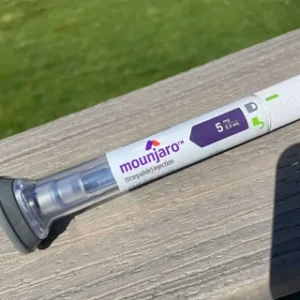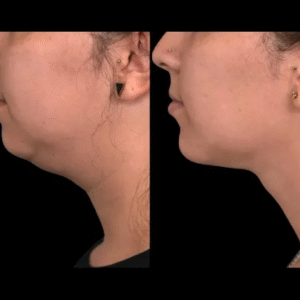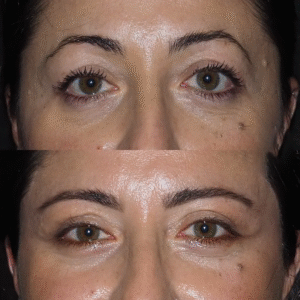If you’ve just had a root canal, you may be wondering what happens next—especially if your dentist placed a temporary crown. These crowns aren’t permanent solutions but are essential in the short term.
How Long Does a Temporary Crown Last is a question many patients ask after undergoing a root canal. Knowing how long these crowns can hold up and how to take care of them properly can make a big difference in your recovery.
What Is a Temporary Crown?
A temporary crown is a protective cap placed over your tooth after it has been treated, typically during a root canal procedure. This crown shields the tooth while your permanent crown is being custom-made. Temporary crowns are usually crafted from acrylic or resin and are designed to last only a short time.
Since the treated tooth becomes weaker and more vulnerable to damage, the temporary crown plays an important role in maintaining structure, preventing infection, and allowing normal function until the final restoration is placed.
Typical Lifespan of a Temporary Crown
Most temporary crowns are meant to last between two to four weeks. Dentists usually schedule the placement of the permanent crown within this timeframe to avoid complications. While it’s possible for some temporary crowns to last a bit longer if necessary, extending their use too far beyond a month isn’t ideal. The materials used in temporary crowns are not meant for long-term durability and can begin to degrade or break if left in place too long.
What Influences How Long a Temporary Crown Lasts?
how long can a temporary crown last The lifespan of a temporary crown can vary depending on a few key factors. First, the material used is crucial. Temporary crowns are not as strong as permanent ones and can crack or wear down more quickly, especially if you’re eating hard or sticky foods. Additionally, the location of the crown in your mouth matters; molars experience more bite pressure than front teeth, which means temporary crowns on back teeth may wear down sooner.
Your daily habits and oral hygiene also play a role. If you’re brushing and flossing properly and avoiding chewing on the side with the crown, you’ll reduce the risk of damage. It’s also essential to attend all follow-up appointments so your dentist can monitor the crown and replace it with the permanent one at the right time.
Signs You May Need to Replace It Sooner
Although temporary crowns are designed to last a few weeks, there are signs to watch out for that indicate yours may need to be replaced sooner. If the crown feels loose or starts to wiggle when you chew, it could be detaching. You might also notice increased sensitivity, especially to hot or cold foods. Pain or pressure while biting could mean the crown isn’t fitting properly anymore.
Another warning sign is visible cracks or damage to the crown itself. If you see a break in the crown or a piece falls off, it’s best to call your dentist immediately. Gum swelling or discomfort around the area may also indicate an infection or irritation, which can compromise the temporary crown’s effectiveness.
Tips for Protecting a Temporary Crown
There are a few smart habits you can follow to extend the life of your temporary crown. First, be cautious about what you eat. Avoid sticky candies like caramel or chewing gum, as they can pull the crown off. Hard foods such as nuts, chips, or even raw vegetables can also crack or loosen the crown. Your dentist will likely recommend chewing on the opposite side of your mouth during this time.
Additionally, continue to maintain good oral hygiene. Brush gently around the crowned tooth and avoid flossing directly up and down, which can dislodge the crown. Instead, slide the floss out from the side. Using a soft-bristled toothbrush and non-abrasive toothpaste can further protect the crown and surrounding gums from irritation.
To summarize, here are four key tips presented as part of this paragraph—to help keep your temporary crown intact: avoid sticky foods, steer clear of hard snacks, chew on the opposite side of your mouth, and be gentle with flossing techniques.
Can a Temporary Crown Be Worn Too Long?
Yes, keeping a temporary crown for too long increases your risk of complications. The temporary material can wear down, become porous, and even break, leaving your treated tooth vulnerable. Worse, the gums may start to shift, or your tooth can become misaligned, making it harder to fit the permanent crown properly. This may require more dental work or adjustments to your permanent restoration.
Infections are another concern. Bacteria can sneak in around the edges of a worn-down temporary crown and cause irritation or further decay, which might undo the benefits of the root canal. That’s why it’s so important to follow your dentist’s timeline and avoid unnecessary delays.
What Happens During the Permanent Crown Appointment?
When it’s time for your permanent crown, the process is relatively straightforward. Your dentist will first remove the temporary crown and examine the tooth to make sure it’s healthy and ready. They’ll clean the area, test the fit of the new crown, and make any minor adjustments needed to ensure comfort and proper bite alignment. Once the crown fits well, it’s cemented into place permanently.
The permanent crown is designed to look and feel like a natural tooth and is much stronger than the temporary one. With proper care, it can last many years and help restore full function to your tooth.
Common Concerns Patients Have
Here are a few concerns that patients commonly express about temporary crowns:
Q Is it normal for a temporary crown to be sensitive?
Mild sensitivity is common, especially to hot or cold. However, sharp or persistent pain could signal an issue and should be checked by a dentist.
Q Can a temporary crown fall off easily? Yes, it can. Sticky or hard foods, or improper flossing, may cause it to loosen or come off. If this happens, contact your dentist to have it reattached.
Q Will a temporary crown stain? Temporary crowns can discolor from coffee, tea, red wine, or smoking, as they are made of porous materials not designed to resist staining.
Q What if I feel discomfort when biting down? Pain or uneven pressure may indicate the crown doesn’t fit properly. Your dentist can make adjustments to relieve discomfort.
Final Thoughts
How Long Do a Temporary Crown Last is a concern that reflects a broader desire for good oral care and long-term dental health. Most temporary crowns hold up well for two to four weeks, giving your dentist enough time to complete your final restoration. By taking proper care of your temporary crown, avoiding harmful foods, and sticking to your dental schedule, you’ll ensure a smoother, safer path to your permanent crown.
While temporary, this small piece of dental work plays a big role in the overall success of your root canal. Treat it with care, and it will serve you well until your final crown takes its place.





